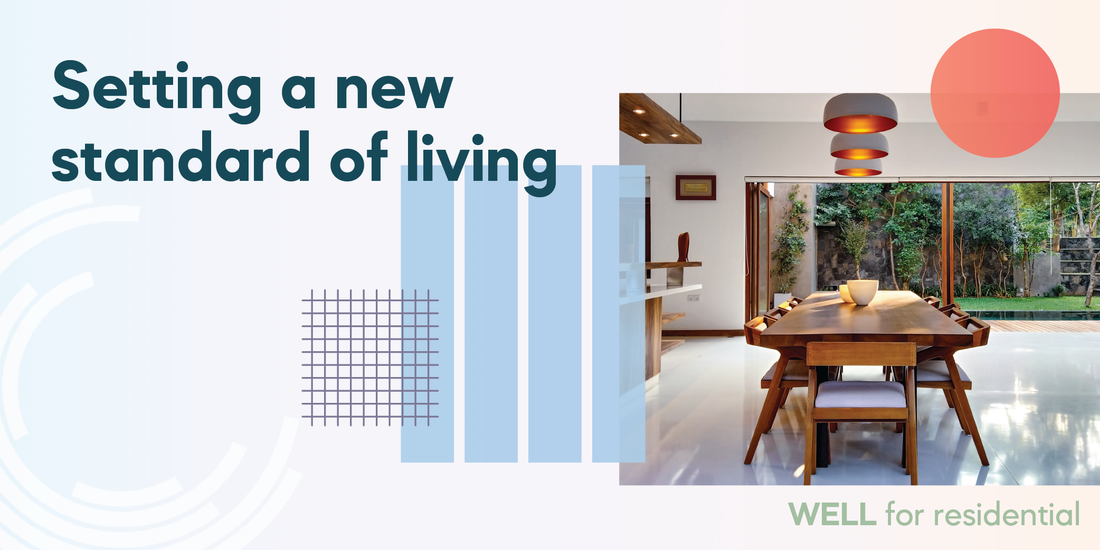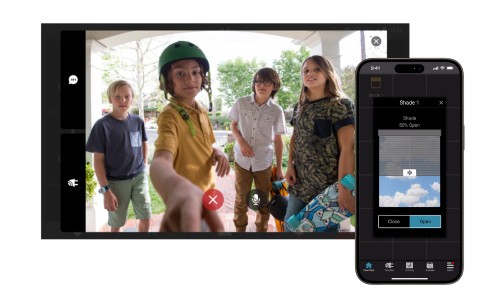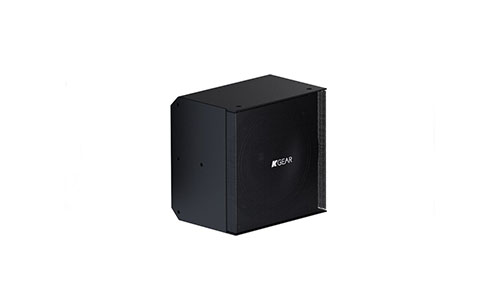You can read a lot into the market for IoT and 4K TVs by listening to earnings calls for Sigma Designs (Nasdaq: SIGM), owner of Z-Wave home automation technology and chip-maker for smart TVs.
Sigma breaks reporting separately for each of its two major divisions:
- Connected smart TV platform (smart TV, set-top box, connectivity products)
- Internet of Things (Z-Wave, mobile IoT)
Here are some interesting nuggets I picked up while reading transcripts for the last two quarters – Q4 2016 and Q1 2017, for the periods ended Jan. 31 and April 30, 2016, respectively.
1. Still no integration between Z-Wave and ‘Smart TV’
When Sigma acquired Z-Wave technology from Zensys in 2008, I wrote a piece titled, “Sigma’s Acquisition of Zensys: Z-Wave in Settop Boxes?”
Good thing the question mark was in there. Eight years later, while Sigma dominates the market for TV set-top boxes and related chipsets, the company has never incorporated Z-Wave into the TV products or the TV enterprise in general.
Consider that Sigma is the only provider of 4K TV chips for Vizio, and supplies 4K SoCs for the Roku 4 and Google Cast streaming devices.
Not only has Sigma not pushed Z-Wave to these and other partners so they could become Z-Wave home automation hubs, the company never even managed to get Z-Wave to be the RF remote-control alternative to IR, despite eight years and millions of set-top boxes sold.
Back in 2008, Zensys executive vice president Raoul Wijgergangs discussed the potential synergies of the acquisition with CE Pro. TV operators, he said, were going to need to replace IR with RF, so Z-Wave would make perfect sense for the transition.
But that was only one rationale for the acquisition, “less than half the reason for it,” Wijgergangs said at the time. The real opportunity would come as TV providers tapped new revenues from existing households from things like home automation.
“Their customers want to roll out services,” he said. “They need an ecosystem – an IR replacement as well as a service platform in-house.”
And yet, eight years later, TV and IoT remain in their separate Sigma silos, and it seems never the twain shall meet.
Pity.
2. Sigma is actually a leader in TV technology
I knew Sigma made TV processing technology for major operators and product developers, but I never considered them a giant in the field. In fact, they’re kind of at the cutting edge.
Sigma rolled out chipsets for Dolby Vision (Dolby’s version of high dynamic range, or HDR) earlier this year with customers including Vizio.
Today the company is “not aware of anybody else in the merchant [chip] market that’s shipping yet,” according to Ken Lowe, VP strategic marketing for Sigma.
He adds, “I think it's going to be material, the fact that we have Dolby and that we have a lead on everybody else.”
In the Q1 2017 earnings call, Lowe said:
We're using the innovations that we've done, the industry firsts, such as Dolby Vision. We're using those as a way to open up doorways in some of the newer manufacturers that we have not been able to lock in.
Some of them are interested in having a complete Dolby outfitting system where they've got both Dolby's advanced Dolby Vision as well as their most advanced audio. In some cases they are looking at coming out with the first 8K TV and outfitting that with complete capability.
All these guys are looking at Sigma because if you look back in the last three or four years, Sigma's had more industry firsts than anybody else. We were the first with HDR, we were the first with Dolby Vision, we were the first with the integration of Roku OS, we were the first with [Google] Cast integration.
So, people realize that Sigma stays on the cutting edge.
We do now.
For fiscal quarter Q1 2017 ended April 30, 2016, Sigma’s TV business contributed $43.3 million in revenue, with the growth coming primarily from its smart TV SoC business, along with “slight improvement over last quarter from our set-top box chips.”
3. Choppy Z-Wave performance
Revenues from Z-Wave products (or “IoT” in Sigma parlance) fell almost 9% in Q1 2017 compared to the previous quarter, from $11.3 million last quarter down to $10.3 million this quarter. Year-over-year sales for Q1 fared worse – down 17.6% from $12.5 million in Q1 2016 to $10.3 million in Q1 2017.
Why the slump? Big service providers (Internet, TV, telco) are “in the process of learning how to successfully market smart home services to their subscribers, which we believe will lead to increased attach rates in the future,” said Sigma CEO Thinh Tran in the Q1 2017 earnings call.
The declines in revenue were largely due to “inventory corrections” spurred by overzealous providers, said Tran induring the Q4 2016 call.
Here, Tran unwittingly describes everything wrong with the consumer IoT business:
Hamed Khorsand, BWS Financial:
So is it more of like a consumer education or is this just service providers don’t know how to market it or what's causing this lumpiness? If it’s growth, it should be just steady growth.
Thinh Tran:
Yeah. They’ll launch, they’ll get overaggressive on their lunch, they’ll launch with a high expectation, which means that not only they produce more gateways than they need, it also means it triggers a bunch of end device production that's expected to attach to it. And then if it doesn't pan out, if they really are not really sticking to an aggressive promotional plan and they run into install problems, then it ends up, they don't get all the flow that they need. And so it ends up being up and down for a while until they figure out exactly how to do it. So they are constantly adjusting their order rate.
This quarter, Tran noted that 10 “major new carriers” would be launching Z-Wave-based services this calendar year, with some of them “including Z-Wave in every new gateway.”
We can’t be sure if Tran has corrected Sigma’s expectations when he notes, “This deployment can come with initial attach rates of between three to five devices.”
4. Near-term growth prospects for Z-Wave
Sigma believes it will recoup its Z-Wave losses for the year so that revenues for that sector will be at least flat for the year. Achieving that will require strong growth in the remainder of fiscal 2017. Here’s how Sigma thinks it will get there:
1. Three “major telcos” are rolling out Z-Wave solutions in China (and by “telcos,” Sigma means large service providers in general, including ISPs and cable companies). In all 10 “major new carriers” will be launching Z-Wave services this calendar year, as noted above.
2. Sigma has “noticed that the telcos have started to learn better and better how to successfully market these products, the Z-Wave, IoT products and services,” says Lowe, “So that's something we think is going to … bolster the growth that we get out of the telco sector.”
3. This year, manufacturers will roll out security sensors under Sigma’s new S2 security framework that are approved by UL for security applications. This is a really big deal (says me, not just Sigma), as the new category could capture the market for dedicated security sensors currently provided by the major alarm system manufacturers.
“Deployment is planned to begin in the fourth quarter and should result in entirely new segment of demand,” says Tran.
Next: Z-Wave Scores Huge UL Win for Security, a First for Mesh Technology
4. Verizon has deployed about 2.5 million Quantum routers with Z-Wave inside, powered by Greenwave Systems. While nothing interesting is happening with these gateways yet, clearly Verizon is planning some kind of home automation offering … again.
Then again, the routers also include ZigBee.
5. “As Apple, Amazon, Google and others roll out the IoT initiative this year,” says Tran, “we anticipate yet another segment of demand to begin to grow in the retail sector as well increase attach rates ….”
Lowe concedes Sigma is still waiting for Apple to make up its mind on Homekit (in much kinder words), “so we’re ready and waiting for that launch,” he says. “That’s all I can say, really that we’re fully prepared and it’s going to make a difference.”
5. Mobile IoT from acquisition of Bretelon
Expect mobile IoT to become a linchpin of Sigma’s growth beginning this year, thanks to its $22 million acquisition of stealthy mIoT developer Bretelon in November 2015.
mIoT, commonly known as M2M, refers to narrowband communications over cellular or other long-distance networks. Devices incorporating mIoT can speak directly to the cloud, without the need for a gateway or home network.
These mIoT highways are piggybacking on standard cellular networks in some cases, or else riding on wide area networks developed specifically for low-power devices.
Sigma’s ultra low-power IoT technology acquired from Bretelon works with both existing and future mobile connectivity platforms.
It will help Sigma expand into outdoor applications for both consumer and commercial markets (fitness, PERs, weather, security sensors, etc.) and it will catapult the company into telematics and device tracking.
Sigma is working with Greenwave Systems – remember, they’re the partner on Verizon’s smart routers – to integrate both cellular and local IoT networks under a single platform, namely Greenwave’s Axon.
Who’s playing in this nascent mIoT space? Start-ups Sigfox and Qowisio made plenty of noise at CES 2016 in January and the buzz keeps growing. Sigfox and Atari just partnered to develop Atari-branded connected devices using Sigfox’s low-power wide area networks (LPWAN) deployed in big markets throughout the world. Nokia, Ericsson and Intel are collaborating on so-called Narrowband-LTE (NB-LTE), while Huawei and others support a competitive platform called Narrowband Cellular IoT (CIoT). IBM, Cisco, Swisscom, KPN and others support LoRa from Semtech, another LPWAN-based solution.
Next: Mobile IoT Breaks Out at CES 2016: Smart Devices, Networks Built for Low-bandwidth Cell Service
We can probably find additional players by looking at who buys swaths of 600 MHz spectrum being auctioned by the FCC.
For its part, Sigma expects to sample mIoT products in the second half of the year, with delivery predicted for next year.
The company says it is working “closely on trials with a very large U.S. mobile carrier who is looking at new products as they seek to further penetrate their existing customer base by offering additional IoT-based services.”
Ken Lowe adds:
We have engaged with a wide number of service providers and there is absolutely no doubt these people all want to move forward with these kinds of products.
They are extremely interested in what we have to offer because our power and cost are the key variables that they are looking at to make these things pervasive. So, they are following us with rapt interest. Nobody else is coming to them saying, “We can solve your LTE problem; your standard LTE is perfectly fine as a mobile IoT network.”
They are all being told by other people, no, go after the Cat M [from Sequans] and go through the expense of upgrading to that. They're being told, no, you should probably adopt SigFox or LoRa in the short term.
They are being told all these stories. We're really the only guy that's coming to them saying, you know what, you're … ahead by focusing on your standard Cat 3 LTE [less than 100 Mbps] which you've already got deployed, no incremental cost.
So the bottom line is that we're building more interest than we can respond to right now. So we're basically – our focus is getting out our product, making sure we can deliver on the schedule, and really focusing in on the three or four really large guys that are showing interest.
If you enjoyed this article and want to receive more valuable industry content like this, click here to sign up for our digital newsletters!










